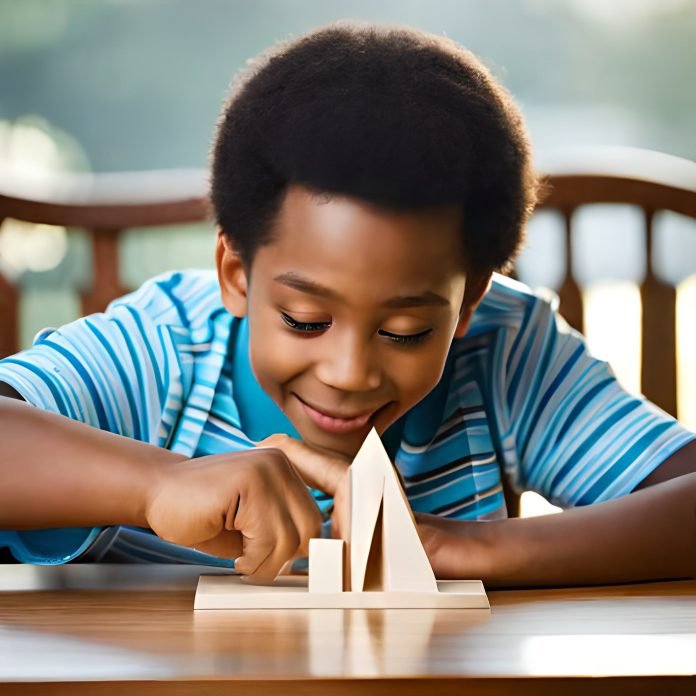Table of Contents
Introduction
As a parent, you want the best for your child, including the toys they play with. With growing concerns about the environment and the effects of climate change, it’s essential to make eco-conscious choices in every aspect of life, including playtime. This article explores the world of eco-friendly children’s toys, the materials used, top brands, benefits, and how to choose the best ones for your child.
The Importance of Eco-Friendly Toys
Toys play a vital role in children’s development and learning. They help stimulate creativity, improve motor skills, and foster social interaction. However, many conventional toys are made of non-renewable resources like plastic and contribute to environmental pollution. By choosing eco-friendly toys, you’re providing a safer alternative for your child and teaching them the importance of sustainability and protecting the planet.
Materials Used in Eco-Friendly Toys
Wood
Wood is a classic, natural material for toys that has been used for generations. Sustainable wooden toys are often made from FSC-certified wood, which ensures responsible forestry practices. They are durable and biodegradable and provide children a warm, tactile experience.
Bamboo
Bamboo is a rapidly renewable resource that is stronger and more durable than many types of wood. Toys made from bamboo are lightweight and smooth to the touch, making them ideal for young children.
Recycled Materials
Toys made from recycled materials help reduce waste and promote a circular economy. Some eco-friendly toys are made from recycled plastic, which reduces the need for new plastic production. Others use recycled paper or cardboard, creating a sustainable alternative for craft and educational toys.
Organic Textiles
Organic textiles, like cotton and wool, are grown without harmful chemicals and pesticides. Toys made from organic materials are safe for children with allergies or sensitivities and biodegrade at the end of their lifecycle.
Top Eco-Friendly Toy Brands
- Plan Toys
- Hape
- Green Toys
- Grimm’s Spiel and Holz Design
- Tender Leaf Toys
Benefits of Eco-Friendly Toys
Health Benefits
Eco-friendly toys are made from non-toxic materials, reducing the risk of exposure to harmful chemicals. This is particularly important for young children who often put toys in their mouths.
Environmental Benefits
Choosing eco-friendly toys helps reduce waste, pollution, and resource consumption. You contribute to a healthier planet for future generations by supporting sustainable practices.
Educational Benefits
Eco-friendly toys often focus on open-ended play, encouraging creativity and problem-solving skills. They also provide an opportunity to teach children about sustainability and responsible consumer choices.
How to Choose Eco-Friendly Toys
- Look for toys made from sustainable materials, like wood, bamboo, or recycled materials.
- Check for certifications, such as FSC, GOTS, or OEKO-TEX.
- Research the brand’s ethical and environmental practices.
- Choose age-appropriate toys that promote creativity and learning.
- Avoid toys with excessive packaging or single-use plastics.
Conclusion
Eco-friendly children’s toys provide a safe, sustainable alternative to traditional plastic toys, while still offering endless hours of fun and learning opportunities. By choosing environmentally responsible materials and supporting ethical brands, you can contribute to a healthier planet for your child’s future. Instill the values of sustainability and conscious consumerism in your child from an early age and help them develop a deeper connection to the world around them.
Apart from that, if you are interested to know about The Best Learning Toys for Little Kids then visit our Daily Bites category.
FAQs
While eco-friendly toys may sometimes be more expensive upfront, their durability and longevity often make them a cost-effective choice in the long run. The health and environmental benefits of choosing eco-friendly toys make them worthwhile investments.
Take care of your eco-friendly toys by cleaning them regularly, following the manufacturer’s instructions, and storing them in a dry, cool place. Encourage your child to treat their toys respectfully, and consider passing them down to younger siblings or donating them when they’re no longer used.
Many eco-friendly toys, especially those made from wood, bamboo, or recycled materials, can be recycled or composted at the end of their lifecycle. Check with your local recycling center for specific guidelines.
Talk to your child about the importance of sustainability and involve them in the selection process. Please encourage them to consider their chosen toys’ materials, packaging, and overall impact.
While electronic toys can be entertaining and educational, plenty of eco-friendly alternatives promote open-ended play and creativity. Consider options like wooden puzzles, building blocks, or arts and crafts materials made from sustainable resources.


























